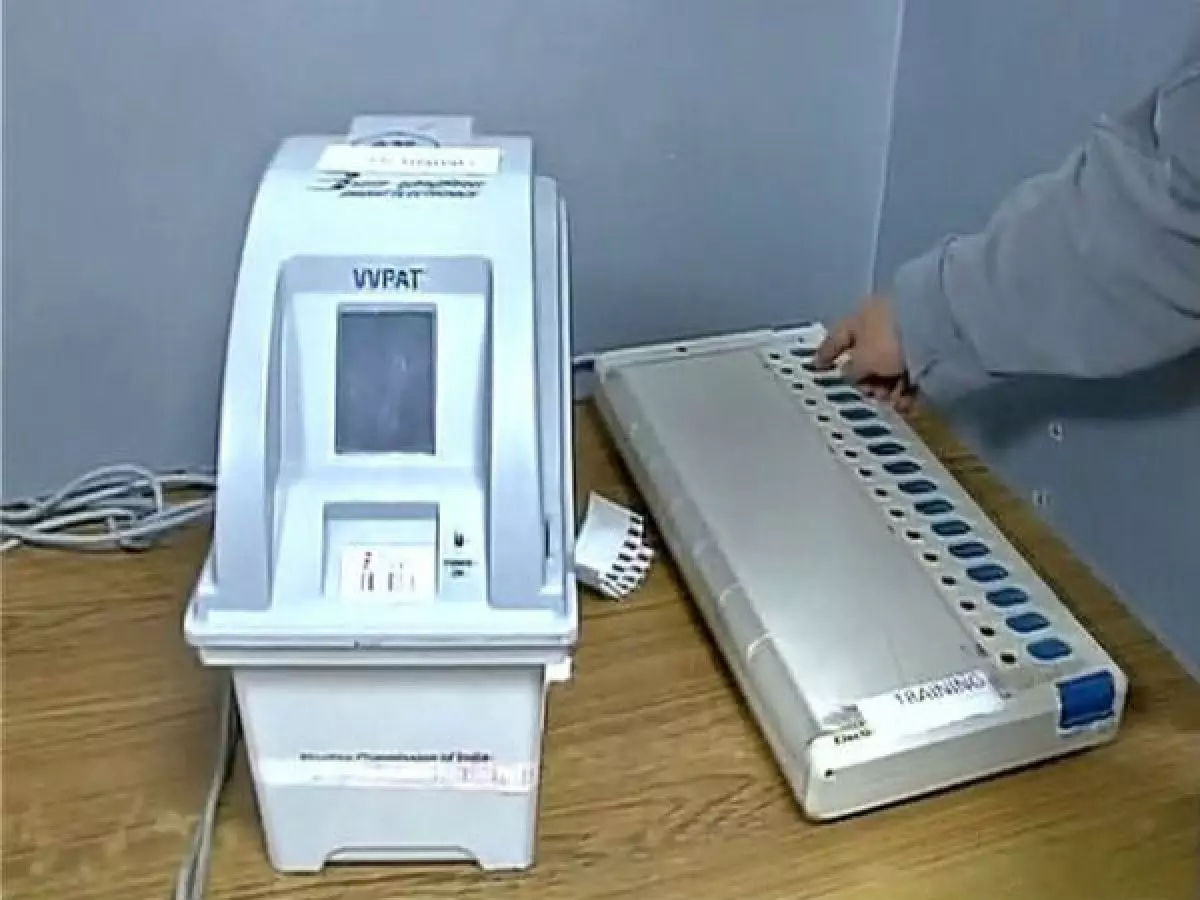Perils for democracy?
EVMs and RVMs leave ample possibility for vote manipulation and, hence, are not in sync with democratic principles; writes Shovanlal Chakraborty

The Election Commission (EC) had to drop its plan to demonstrate the working of a prototype multi-constituency remote voting machine (RVM) on January 16 after many political parties that had been invited to New Delhi to witness it questioned the very need for it. “The issue of the need to have such a machine should be settled first”, said a senior Opposition leader, adding that the EC should rather address concerns over the credibility of the existing Electronic Voting Machines (EVMs). At a meeting of political parties on January 15 to discuss the RVM issue, many referred to the serious doubts surrounding the existing EVMs and stated that the EC has not yet responded to a memorandum on the subject submitted by civil society experts in May last year.
Truth is, public trust in EVMs has never been as low as it is today. This is because EVM voting does not comply with the essential “Democracy Principles” that any electoral system should satisfy. These principles were laid down by the German Federal Constitutional Court in 2009. Here is the relevant extract from the judgement:
“The votes were exclusively recorded on an electronic storage medium after the ballot. Neither the voter nor the returning committees, nor the citizens present in the polling station, were able to check whether the votes cast were recorded by the voting machines without falsification… The essential steps in the ascertainment of the results by the voting machines also could not be verified by the public.”
On these grounds, EVM voting was declared unconstitutional. Following Germany’s lead, all genuine democracies went back to the paper ballot. The Indian EVM voting system is replete with more serious flaws that have been repeatedly flagged but have received no response from the EC. These are also contained in the civil society memorandum of May last year. Here are some of them:
✵ In an EVM, a vote is recorded electronically by pressing a button. But the voter cannot examine what has been recorded, nor has any way to know whether her/his vote is cast as intended, recorded as cast, and counted as recorded. It also does not provide provable guarantees against hacking, tampering and spurious vote injections. Thus, elections must be conducted assuming that the EVMs could be tampered with, and results manipulated.
✵ The design and implementation of EVMs, as well as the results of both software and hardware verification, are not public, nor open to independent review…According to top experts, due to the absence of end-to-end (E2E) verifiability, the present EVM system is not verifiable and therefore, by its very design itself, is unfit for democratic elections.
With the introduction of Voter Verifiable Paper Trail (VVPAT) in EVMs, there are two votes now — one recorded in the EVM memory, and one printed by the VVPAT. Rule 56D(4)(b) of the Conduct of Election (Amendment) Rules, 2013, provides for the primacy of the VVPAT slip count over the electronic tally of ballots cast and calculated on the EVMs. Even then, EC has consistently refused to conduct a 100 per cent counting of VVPAT slips and continues to count only the EVM memory, which is not the real vote! Section 128 of the Representation of the People Act, 1951, mandates secrecy of voting. This is possible only through randomising the vote counting, which cannot be done in EVMs. This has exposed the weak and vulnerable sections of society to intense pressure from contesting candidates and also leads to ‘voter manipulation and suppression’.
The EC’s VVPAT system is not truly voter-verified, because it does not provide the necessary agency for a voter to cancel her/his vote if she/he thinks it has been recorded incorrectly. Also, in case the voter raises a dispute, there is no way for his/her to prove that he/she is not lying. The present rule of penalising him/her for raising the dispute is draconian.
Election results are being declared and governments are formed without an appropriate post-election audit of the EVM counts against manual counting of the VVPAT slips, which must be done to ensure verification and reliable ascertainment of results. The master summary of 542 constituencies in the parliamentary elections of 2019 showed discrepancies in 347 seats, and in six seats, the discrepancy was higher than the winning margin. The EC neither clarified nor resolved this serious issue.
The EVM patents of Public Sector Undertakings (PSUs) Bharat Electronics Limited (BEL), Bengaluru, and the Electronic Corporation of India Limited (ECIL), Hyderabad, which manufacture the EVMs, have reportedly expired. It is not known from where EVMs and VVPATs are being procured now and what their design and functional integrity are!
Under Article 324 of the Constitution, the power of superintendence, direction and control of elections to the Parliament and state legislatures, are vested in the Election Commission. BEL and ECIL are not under the control or supervision of the EC. These PSUs share confidential software programme with foreign chip manufacturers. In the event, there is hardly any “control and supervision” of the EC over the process and mechanism of the elections!
Last but not the least, the 'jugaad'-like manner in which the VVPAT machine has been inserted into India's electronic voting process has endangered security. Therefore, there is a distinct possibility of vote manipulation.
The perils of EVM voting are clear and present. Unless effectively addressed and resolved immediately, there is every danger of India’s electoral exercise morphing into a “mandate of the machines”, instead of being a mandate of the voters!
Views expressed are personal




